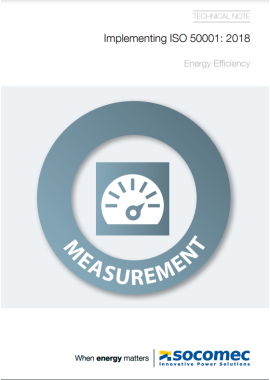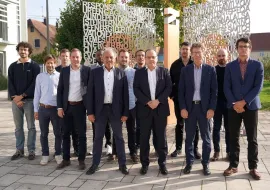For many facility managers, lowering energy usage is a bit of a mystery. How are you going to accomplish lower energy consumption – and for that matter, why should you be working to reduce your usage? It all starts with implementing an effective energy management strategy.
What is an Energy Management Strategy?
If you’re considering implementing an energy management strategy, it’s important to first have a complete understanding of what it is—and why you need it. Simply put, an energy management strategy is a system put in place to reduce your building’s energy usage. It involves monitoring your consumption, creating goals to reduce your consumption, and putting a plan in place to reach those goals.
Why do you need an energy management strategy? Corporations are using a vast amount of energy. In fact, “the buildings sector accounts for about 76% of electricity use and 40% of all U.S. primary energy use and associated greenhouse gas emissions,” according to energy.gov. It is time for energy usage to be taken seriously, and an energy management strategy can help you reduce your building’s carbon footprint. On top of that, it will reduce costs for you, as less energy usage will mean lower energy costs.
LEED and ISO 50001: Your Energy Management Guide
Many corporations know that they want to reduce energy consumption, but they’re not sure where to begin. How do you implement an effective energy management strategy?
That’s where LEED & ISO 50001 comes in. These strategic tools developed by the US Green Building Council and the International Organization for Standardization (ISO) are designed to help organizations implement an energy management system that works.
Buildings that are LEED (Leadership in Energy and Environmental Design) certified have demonstrated their commitment to energy efficiency and sustainability. To obtain certification, buildings must meet certain efficiency standards. Though it’s ideal to design buildings with efficiency in mind from the beginning, older buildings are not exempt from LEED status. By installing energy metering and monitoring devices, building managers can make better decisions about their energy use and clearly show their results. By obtaining LEED certification, building managers can feel confident that they are reducing the impact their building has on the environment.
Similar to LEED Certification, ISO 50001 is an internationally recognized standard for energy management, specifically for industrial facilities. Companies can purchase this set of standards to implement in their own buildings. Following ISO 50001 will help facilities to reduce their energy consumption, saving costs and reducing their environmental impact.
Plan – Do – Check – Act
ISO’s standards follow the Plan – Do – Check – Act framework, designed to allow corporations to continually improve their energy usage. The PDCA, predictably, consists of four steps:
Plan: You can’t track your energy consumption if you don’t know what your baseline is. This step involves reviewing your energy usage and using this information to come up with your targets and a plan to get there.
Do: In this step, you’ll take the plan you created and implement it.
Check: Is your action plan working? In this step, you’ll continuously monitor your processes and energy consumption.
Act: As you measure your results, you’ll find new ways to improve your energy consumption.
It’s important to note that the PDCA framework is not implemented once and forgotten. This framework should guide your energy processes continually; you should always be planning to reduce your consumption, following through on your plans, and evaluating the results.
Implementing ISO 50001 for Your Organization
Now that you know about ISO 50001, how would you go about implementing it? You can buy the set of standards from ISO, but having the standards is not the same as knowing how to use them.
If you’re ready for a more energy efficient building, download Socomec’s free Technical Note on implementing ISO 50001. Our technical note incorporates our extensive experience in helping organizations to reduce their energy consumption with internationally recognized energy standards. Download your technical note today and start saving energy.






